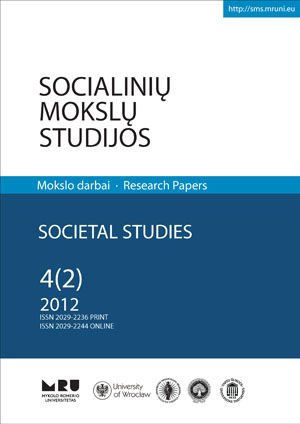Bendrininkų rūšys ir jų atribojimo problemos teismų praktikoje
Accessories and Problems of Their Distinction in Practice
Author(s): Giedrius BūdvytisSubject(s): Social Sciences
Published by: Mykolas Romeris University
Keywords: complicity; accessories; principal offender; aider; abettor; organizer
Summary/Abstract: The article deals with all kinds of accessories, which are provided in the Lithuanian Criminal Code’s Article 24 from Part 3 to Part 6. These accomplices are: principal offender, organizer, abettor and aider. The author not only describes them, but also emphasizes the distinguishing problems both in Criminal Law theory and in Lithuanian court practice. The main consideration is given to distinguishing the principal offender from the aider and the organizer from the abettor. The author also highlights the difficulties that tend to appear in court practice in which distinguishing accessories mentioned above sometimes are highly problematic. After Criminal Law theory and court practice analysis, the author arrives at more identifiable standards and criteria in distinguishing the principal offender from the aider and the organizer from the abettor. In the first part of the article the author engages in problems that emerge when identifying principal offenders. Firstly, the author points out that an accessory without special principal’s features, which are provided in particular criminal acts, can never be the principal offender, although he or she directly caused the actus reus of the offence. Then author criticizes court practice when accessories that have not caused any actus reus of the offence are determined as perpetrators just because of their common agreement and common fault with other principals. The second part is dedicated to the problems of determining an aider, a perpetrator or the principal. The author notes that the main problem in determining the accessory as an aider or a perpetrator is the concept of “necessary help” which was dictated by Criminal Law theory and was adopted in practice. This concept determined principals. However, the concept perforce relates to the aider who also helps the principal. After Criminal Law theory and court practice analysis, the author suggests that more identifiable distinction criteria between the aider and the principal should be the accessory’s control over the offence, his/her intention and desire to own the offence and the substantial contribution to the offence. Meanwhile, the aider’s actions do and are merely to support the acts of others. Finally, the last part highlights that Lithuanian Criminal Case practice does not always determine the abettor from the organizer and vice versa. The author concludes that the organizer should be determined as a connecting-link between the principal’s actions and committing the offence or criminal consequences. Meantime, the abettor just encourages the principal to commit an offence, presents the idea of the offence. Contrary to the organizer, the abettor does not produce a plan of an offence, does not range perpetrators, does not unite their endeavour for common criminal goals, nor makes preparations before the crime.
Journal: Socialinių mokslų studijos
- Issue Year: 4/2012
- Issue No: 2
- Page Range: 645-662
- Page Count: 18
- Language: Lithuanian

